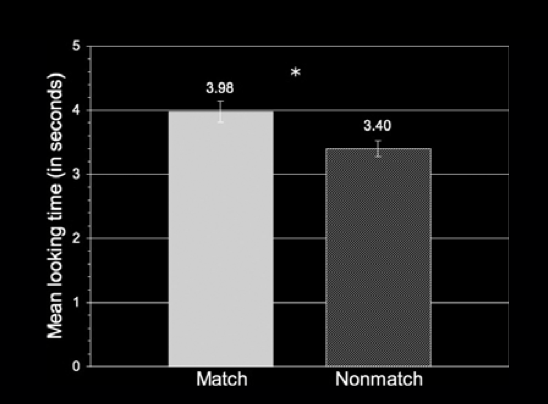Press the right key for the next slide (or swipe left)
also ...
Press the left key to go backwards (or swipe right)
Press n to toggle whether notes are shown (no equivalent if you don't have a keyboard)
Press m or double tap to see a menu of slides
Words and Communicative Actions
Pointing vs. linguistic communication
a point
- associate gesture with referent
- identify the agent of the gesture
- identify the intended recepient of the gesture
- infer message (Why is this agent pointing at that thing for her?)
a one-word utterance
- associate word with referent
- identify the utterer
- identify the intended audience
- infer message (Why is this utterer talking to her about that thing?)
Last time we focussed on how children get to associate words with their referents (or meanings, whatever exactly those turn out to be).
Here we discussed the idea that this comes about by training, and contrasted it with the idea that children identify the referents of words through the use of reason.
What I want to stress now is that getting the word-referent relation is only a part of what's needed to communicate by language.
This was brought out drammatically by the Hare and Tomasello task I mentioned earlier ...
Recall this experiment in which Hare and Call (\citeyear{hare_chimpanzees_2004}) contrast pointing with a failed reach as two ways of indicating which of two closed containers a reward is in. Chimps can easily interpret a failed reach but are stumped by the point to a closed container.
\textbf{Note that} chimpanzees do follow the point to a container \citep[see][p.\ 6]{Moll:2007gu}.
Chimps do follow the point to the container, but they don't get the message.

Hare & Tomasello 2004
Tincoff and Jusczyk showed 6 month old infants two videos (not pictures: what you see here are stills from their videos) simultaneously.
While the videos were playing, the infants heard a word spoken. The word was either 'hand' or 'foot'.
Which video did they look at more?

Tincoff and Jusczyk 2011, figure 1
Here are Tincoff and Jusczyk's results.
They suggest that 6-month-olds can already associate some words with their referents.
But 6-month-old infants don't communicate, neither with words nor by pointing.

Tincoff and Jusczyk 2011, figure 1
Pointing vs. linguistic communication
a point
- associate gesture with referent
- identify the agent of the gesture
- identify the intended recepient of the gesture
- infer message (Why is this agent pointing at that thing for her?)
a one-word utterance
- associate word with referent
- identify the utterer
- identify the intended audience
- infer message (Why is this utterer talking to her about that thing?)
Recall our simple description of what is involved in communication.
What I'm suggesting is two very simple ideas. First, to be able to associate pointing gestures with their referents is not sufficient for understanding them; second, basic the pointing-referent associations may be grasped by non-communicators.
(Here the 'basic' qualifier is there because in some cases deciding on the referent may involve thinking about the agent and recepient, their knowledge and intentions.)
And likewise for the case of linguistic communication.